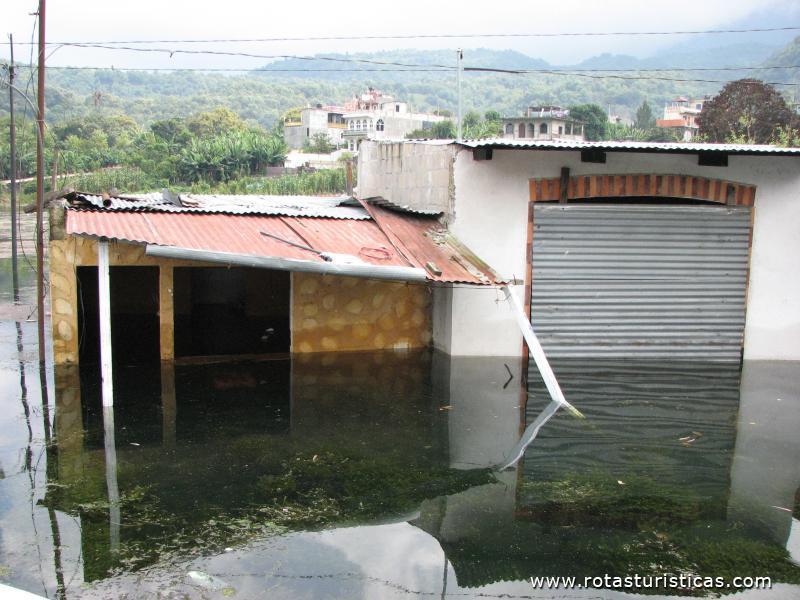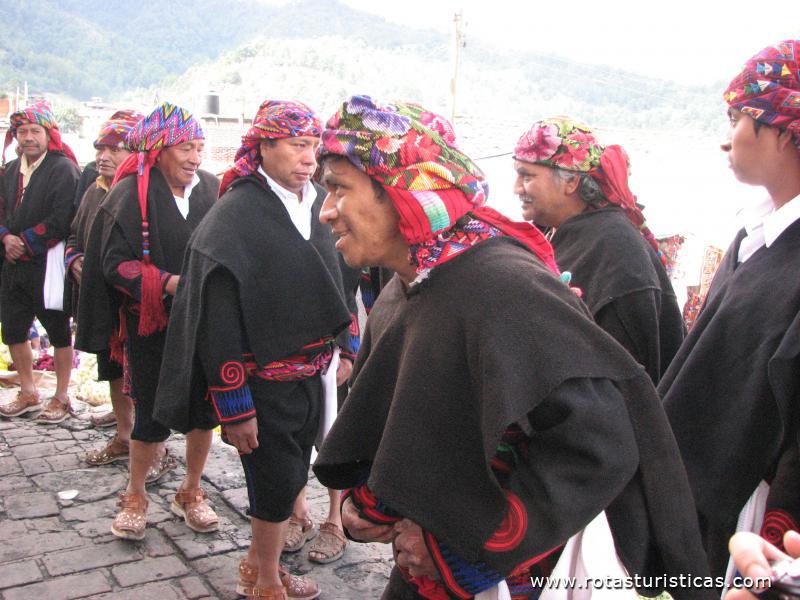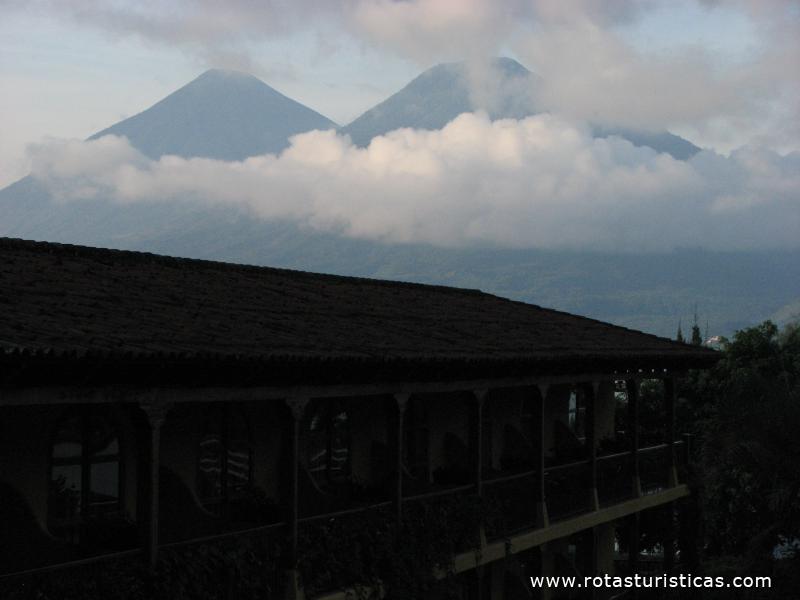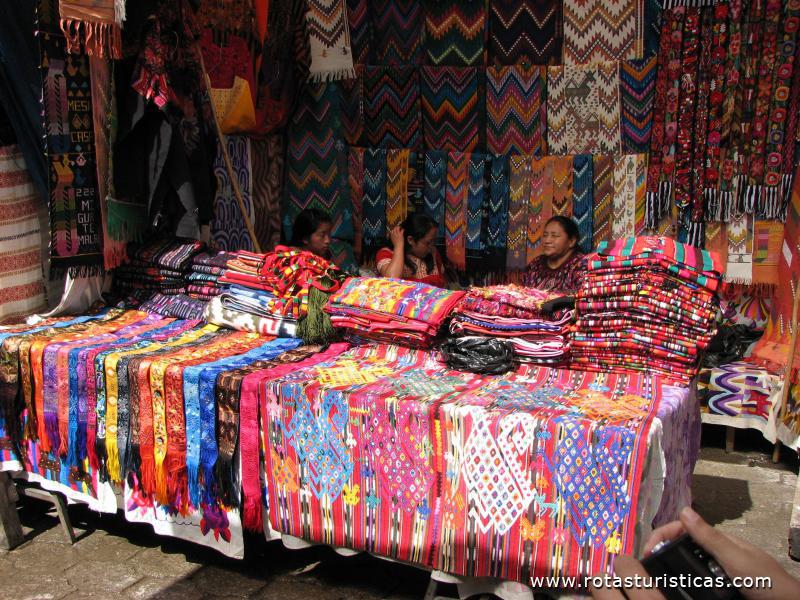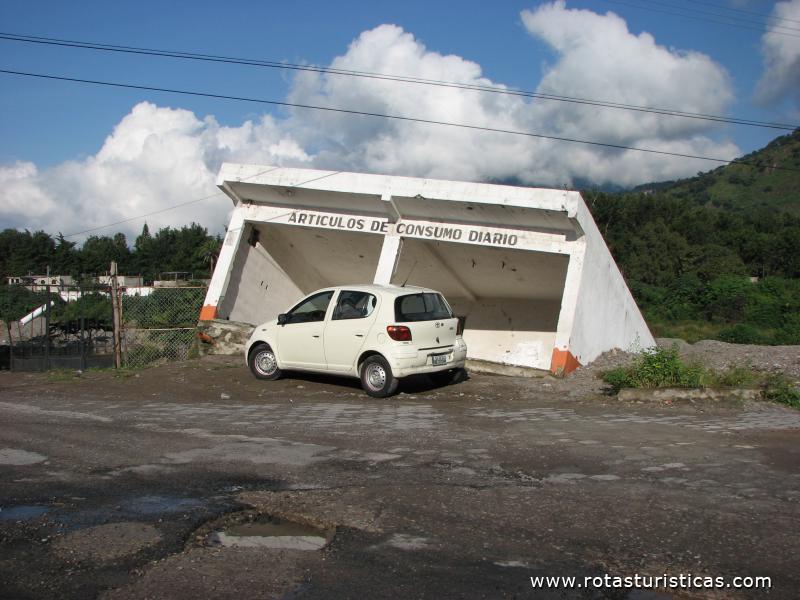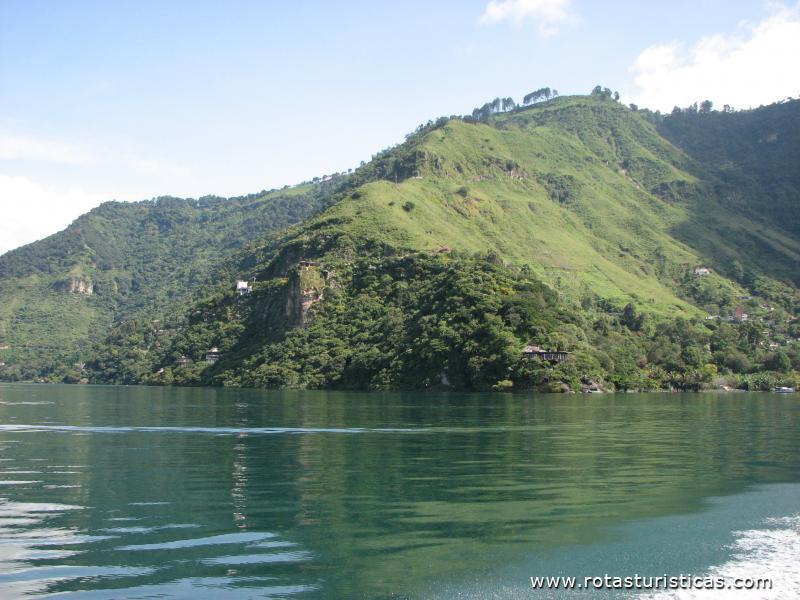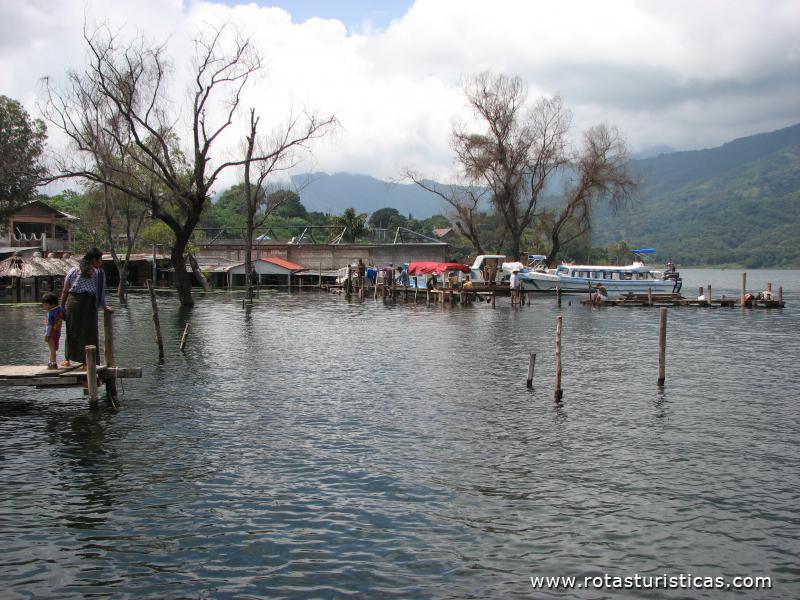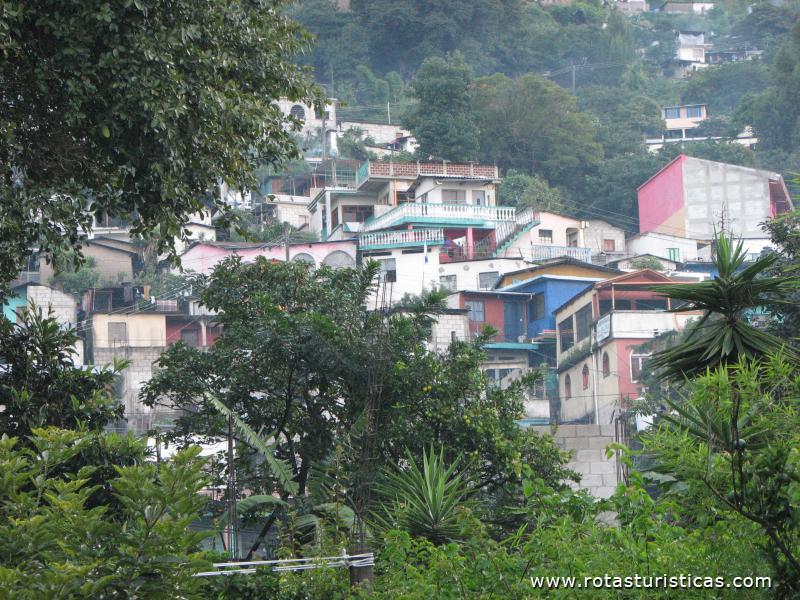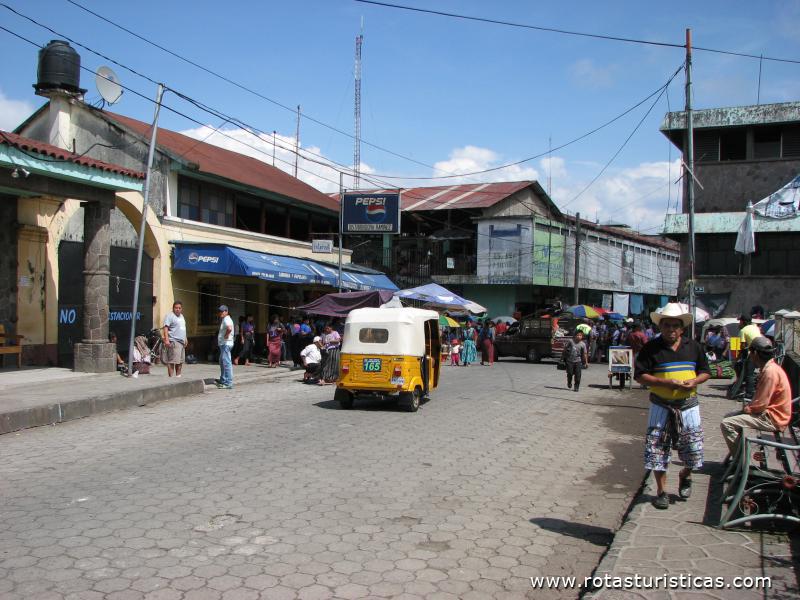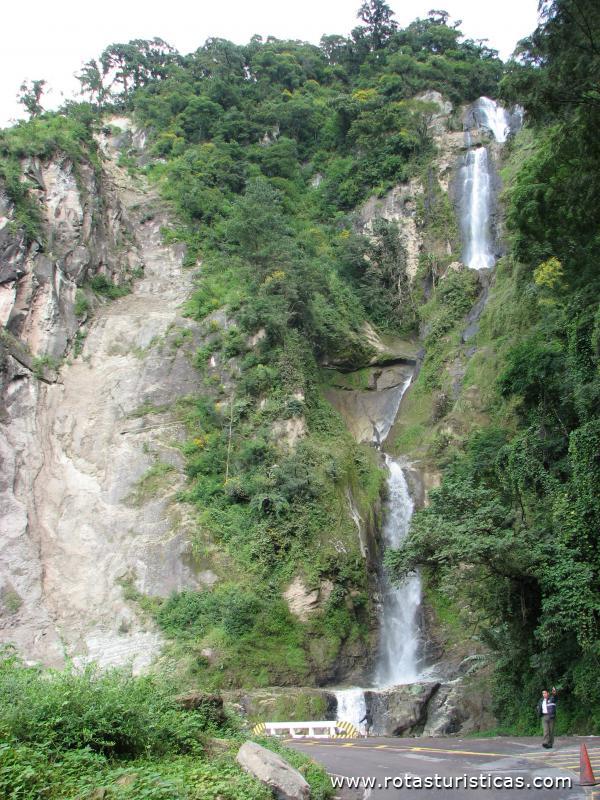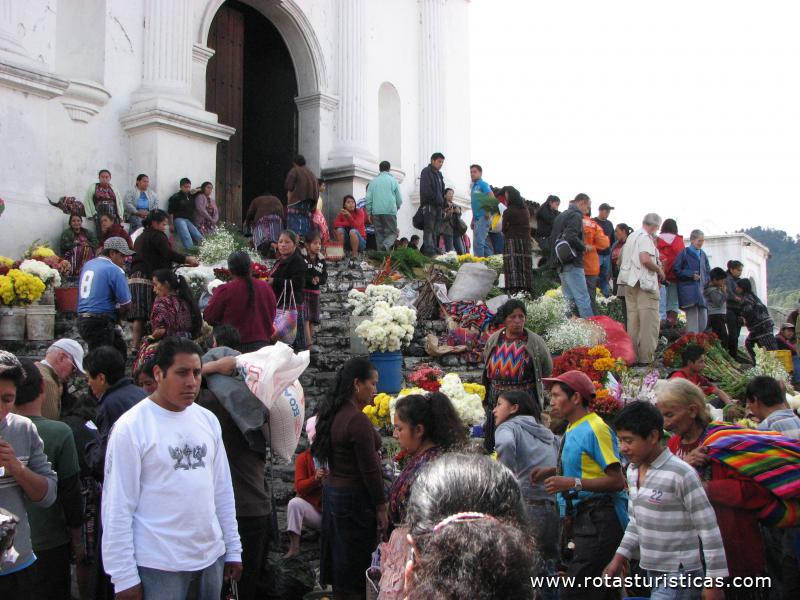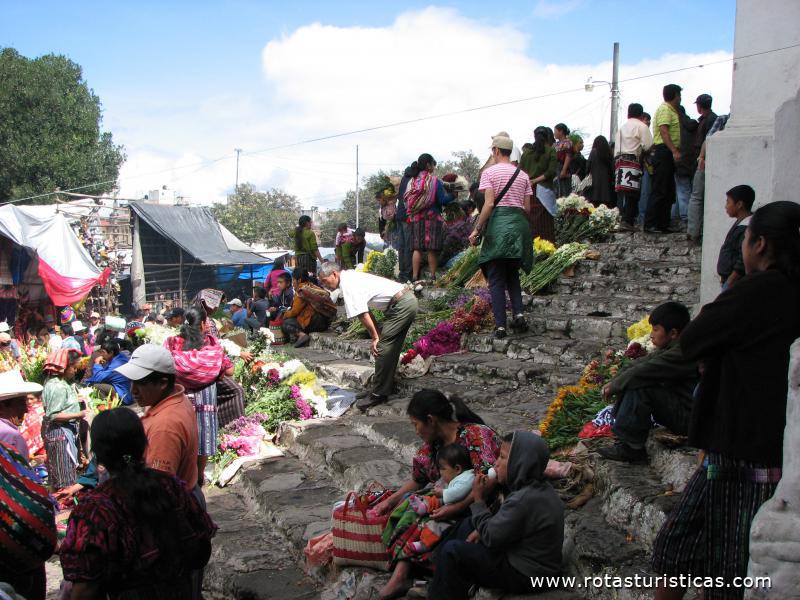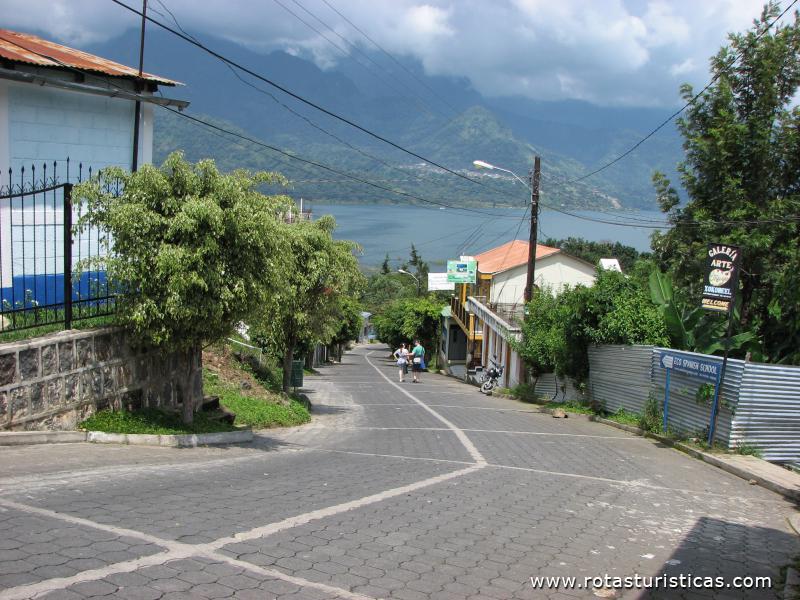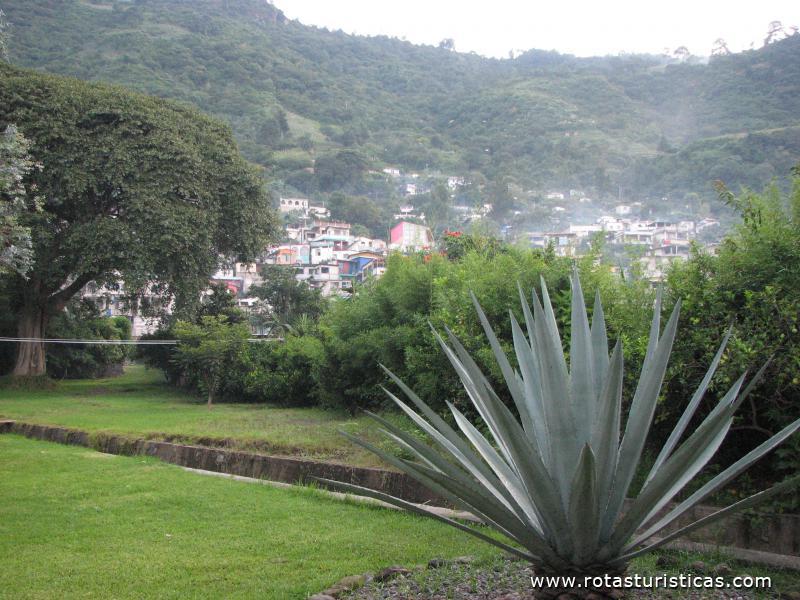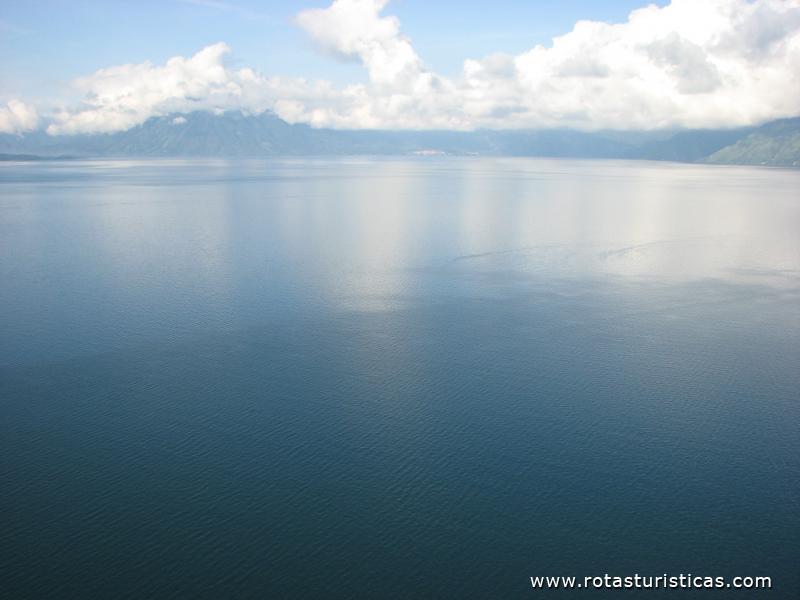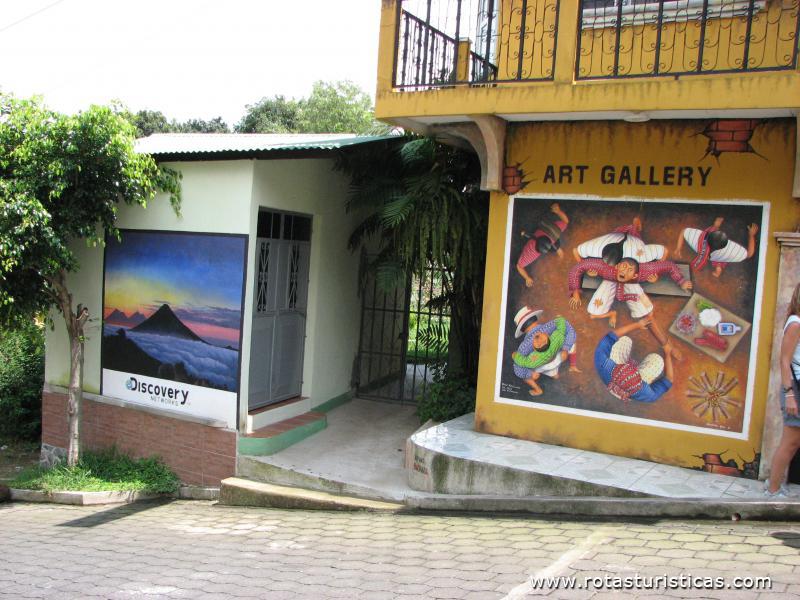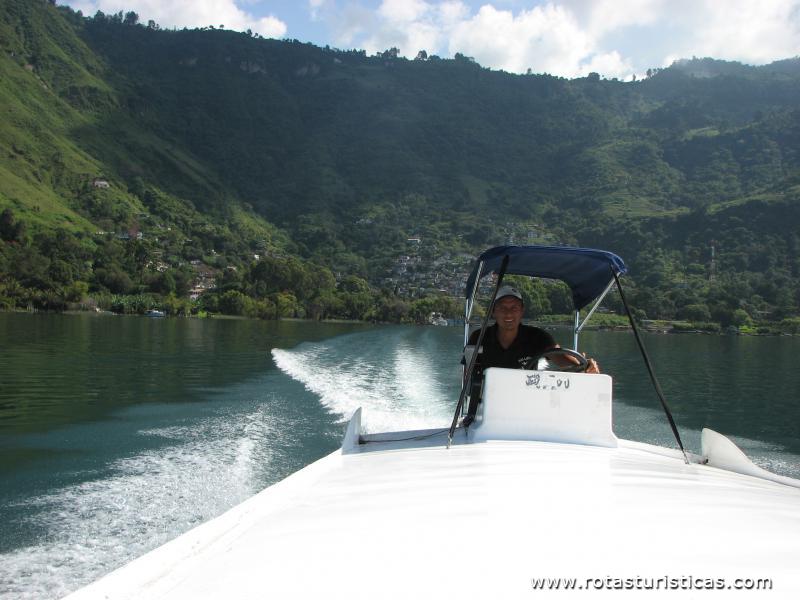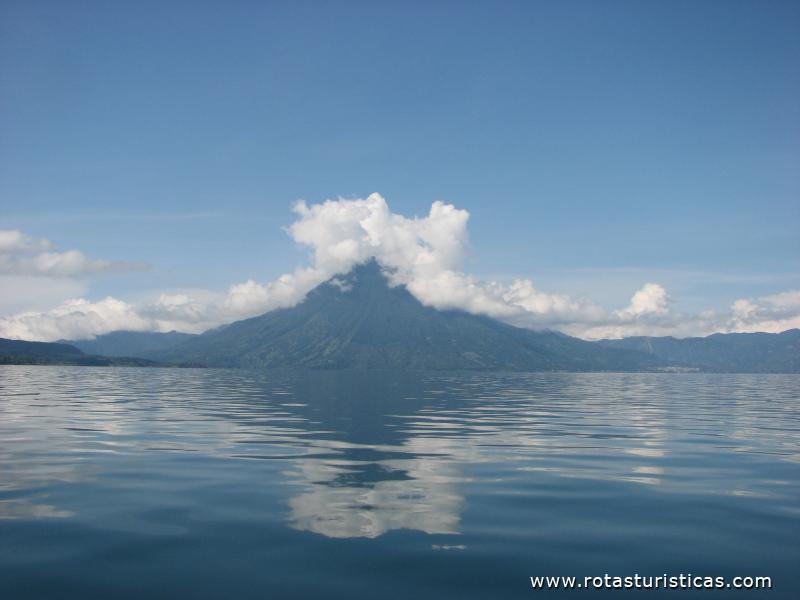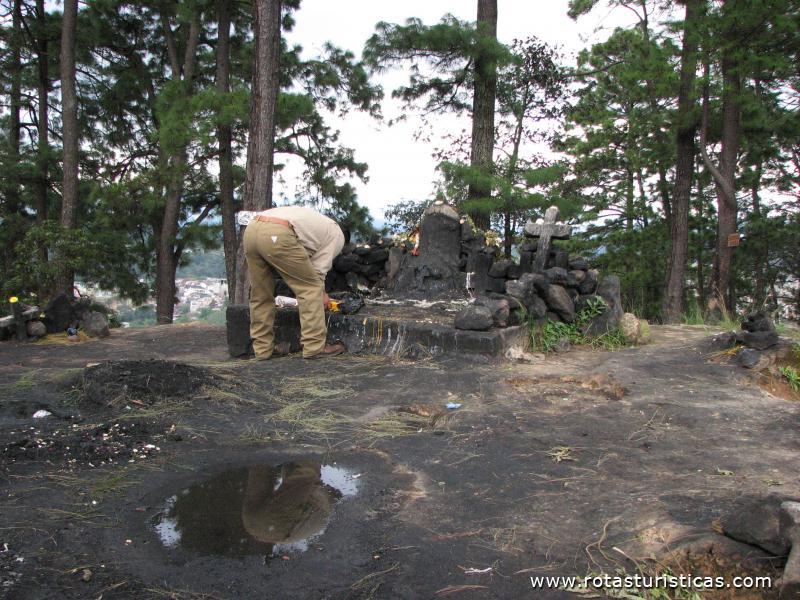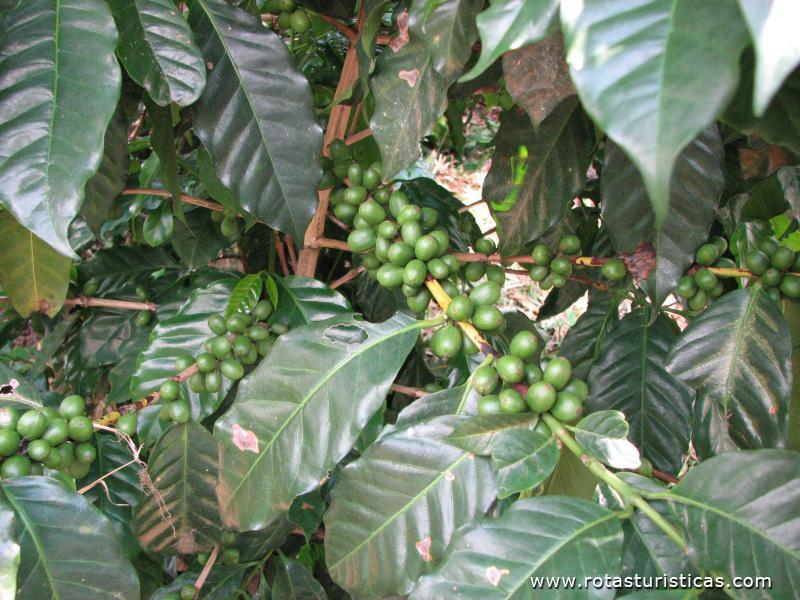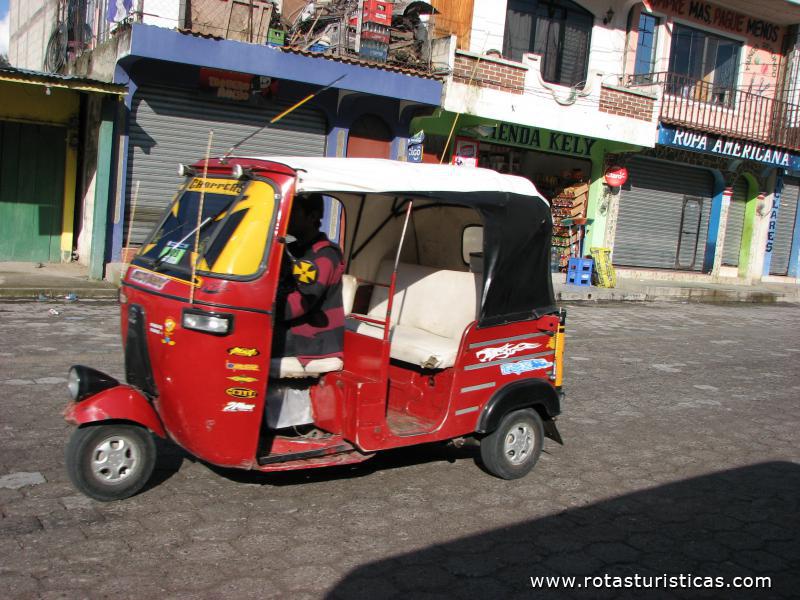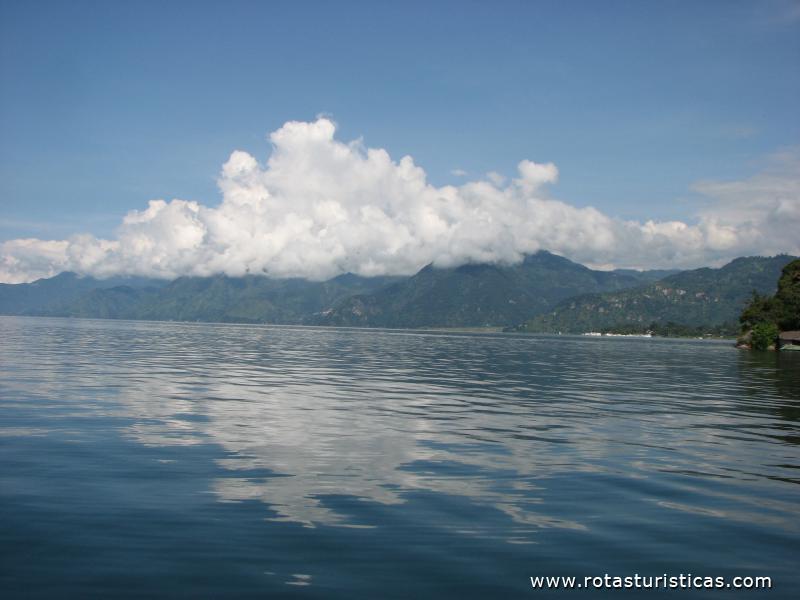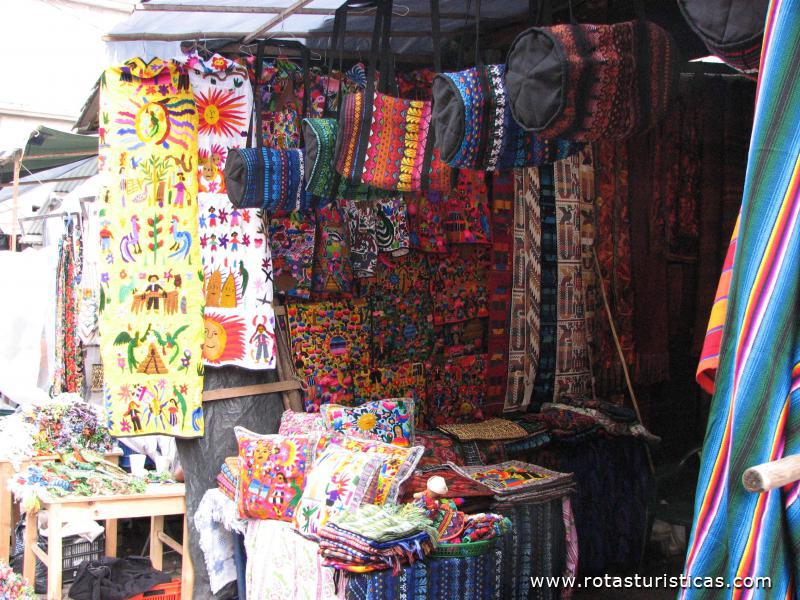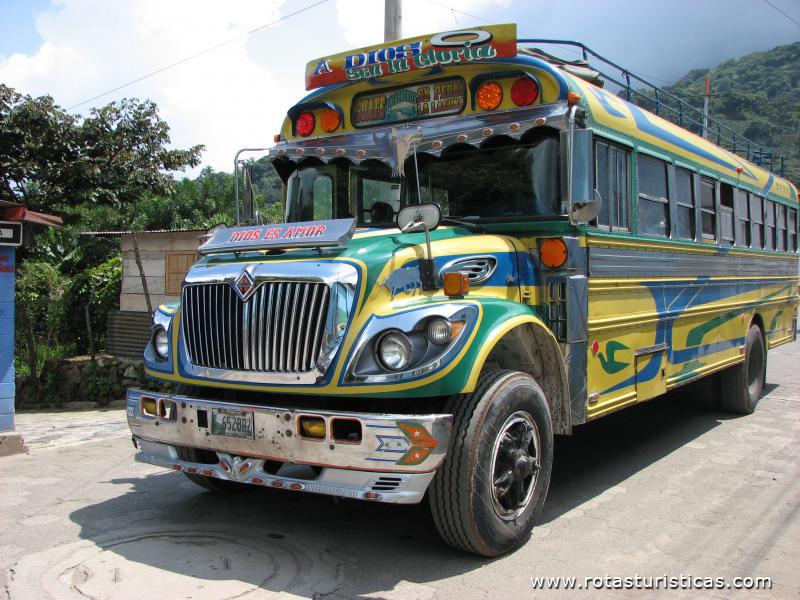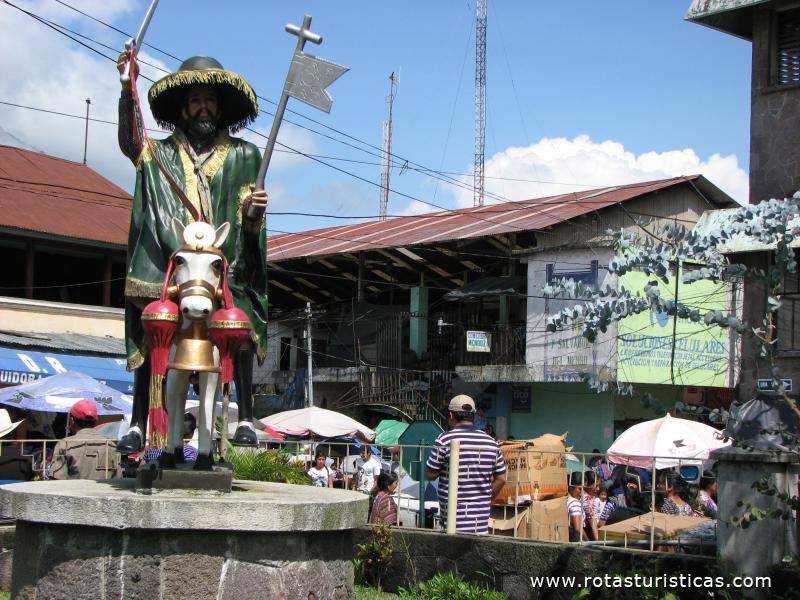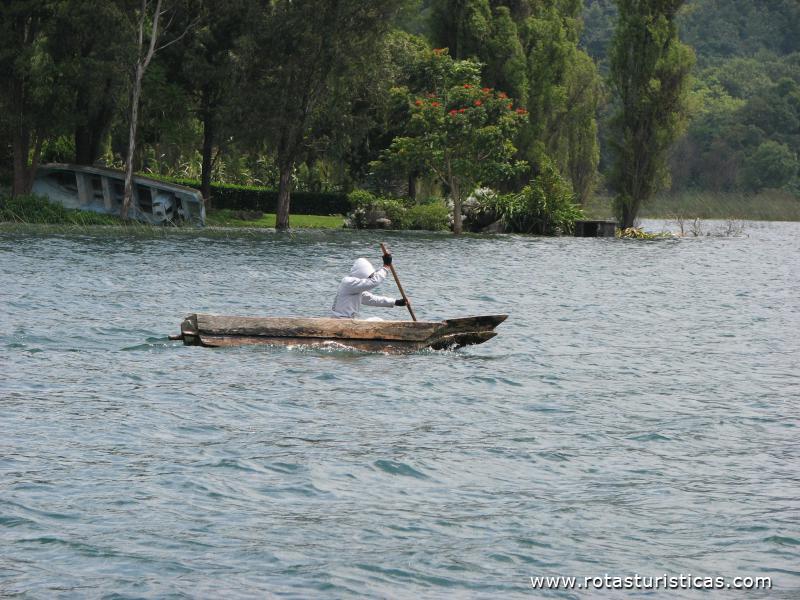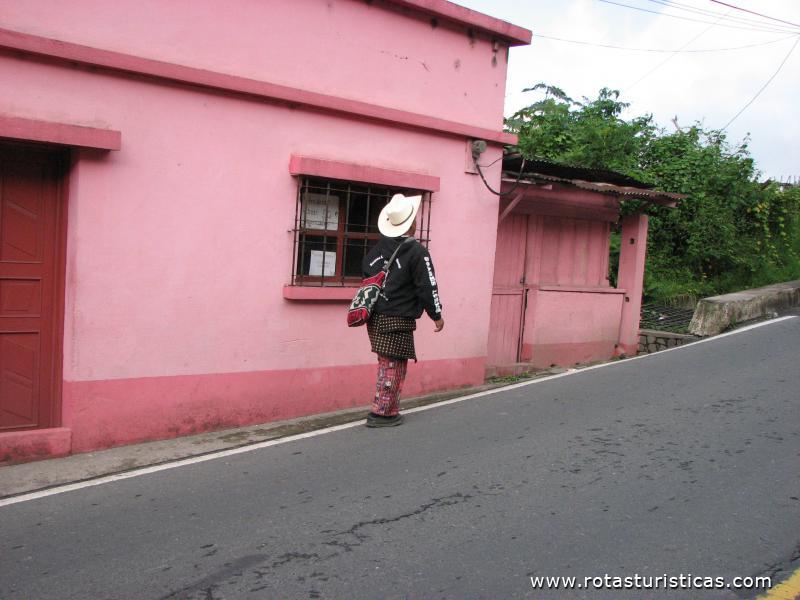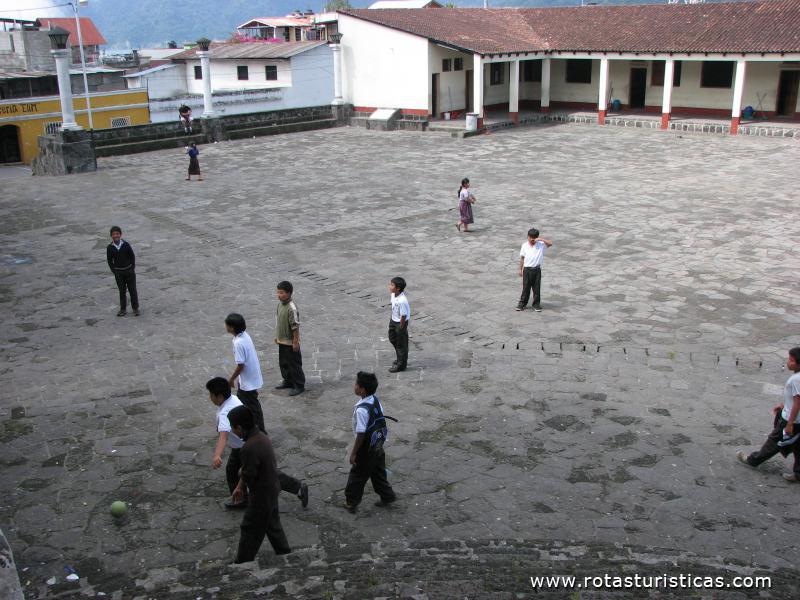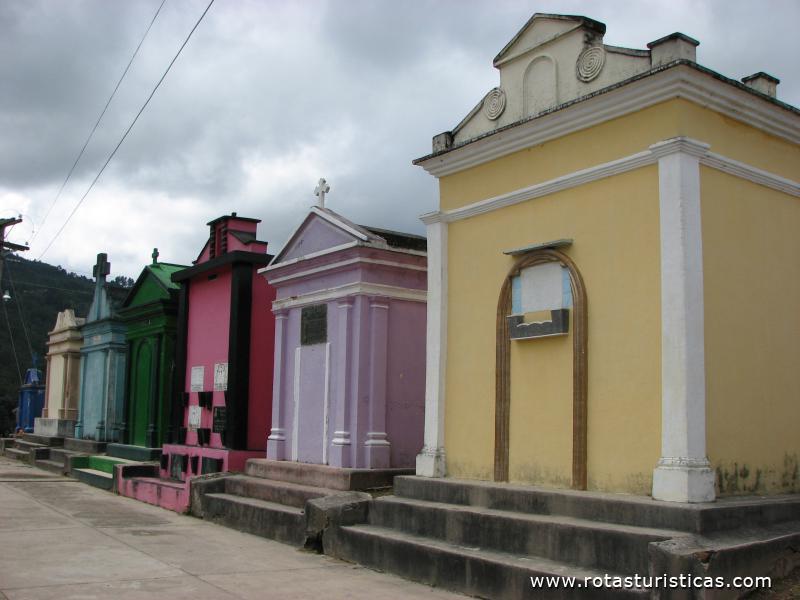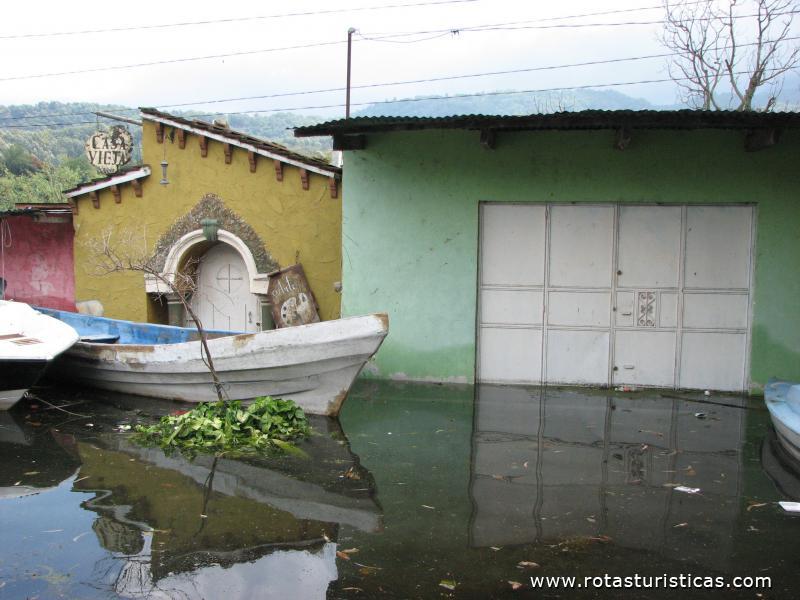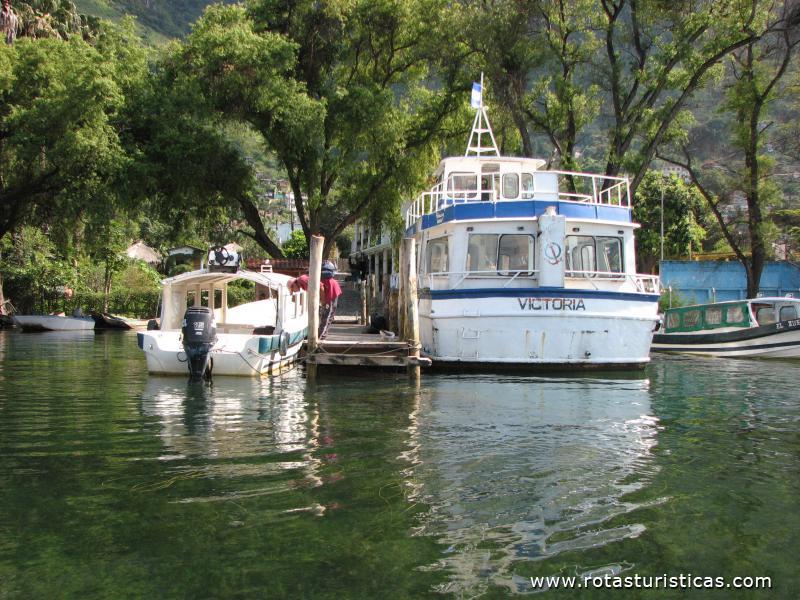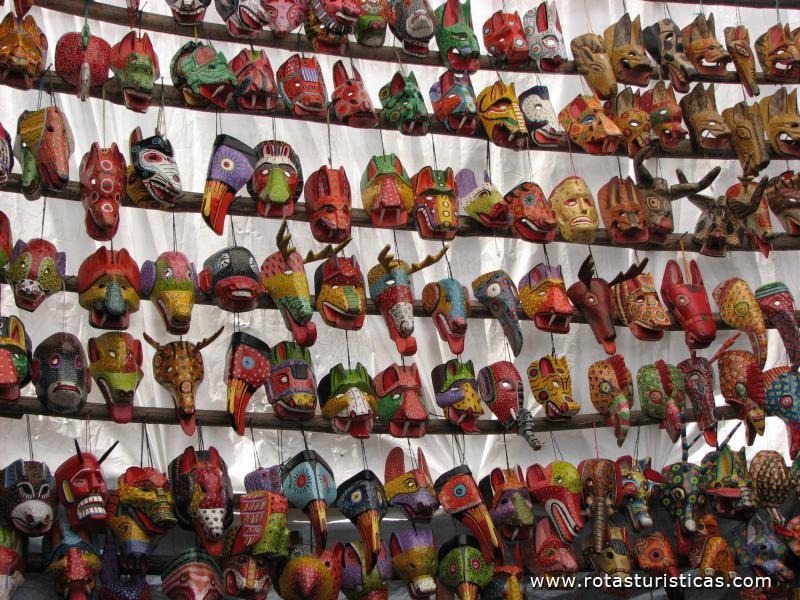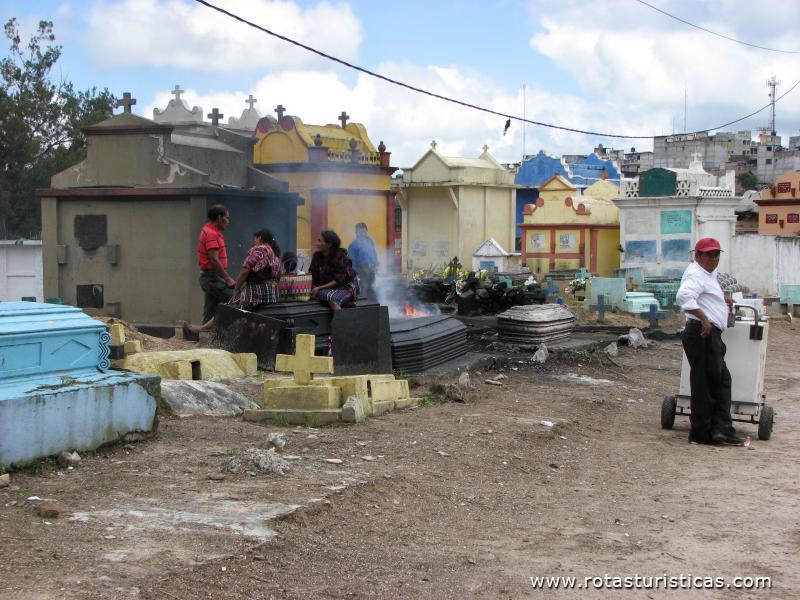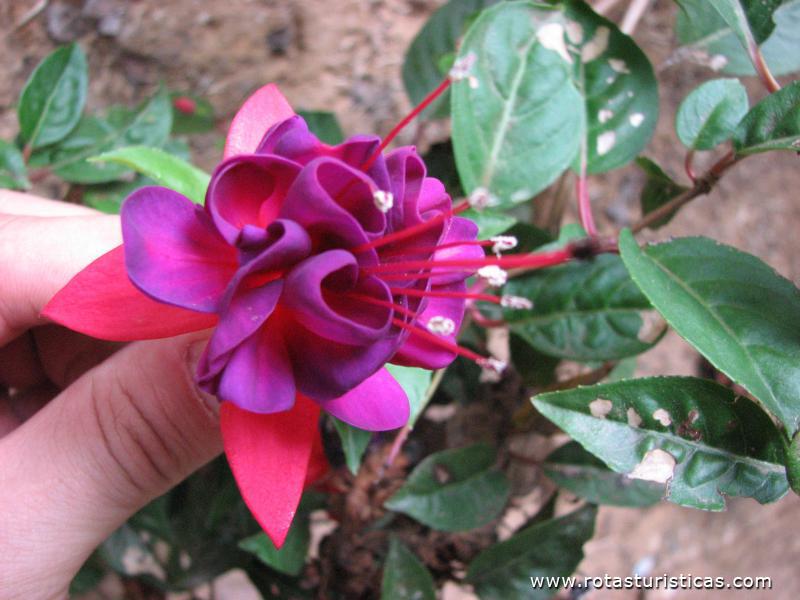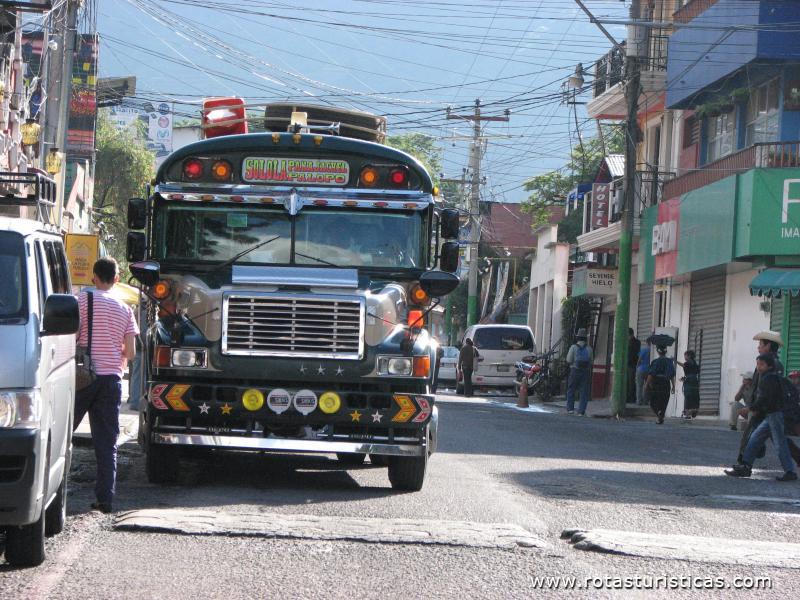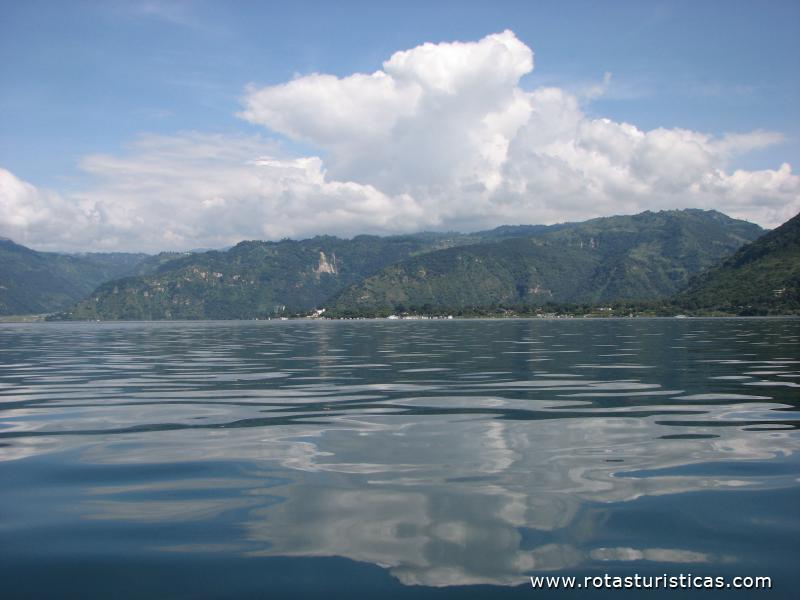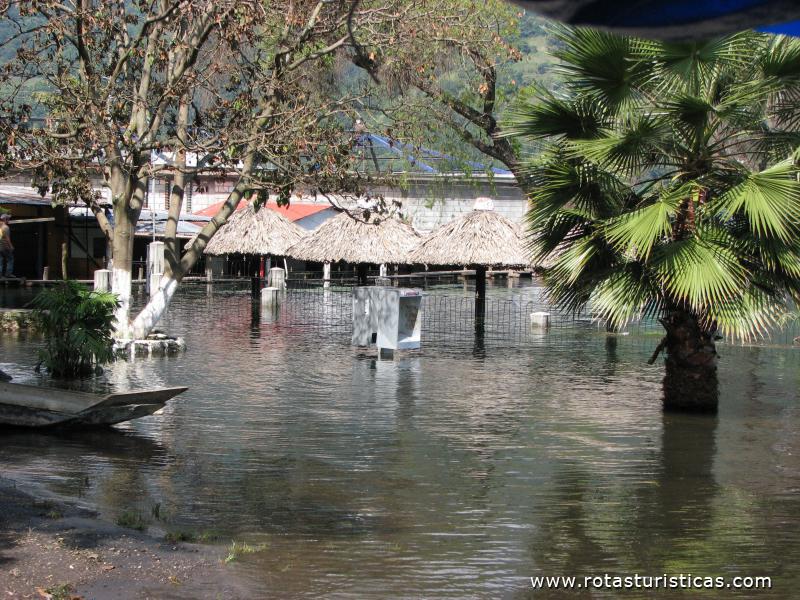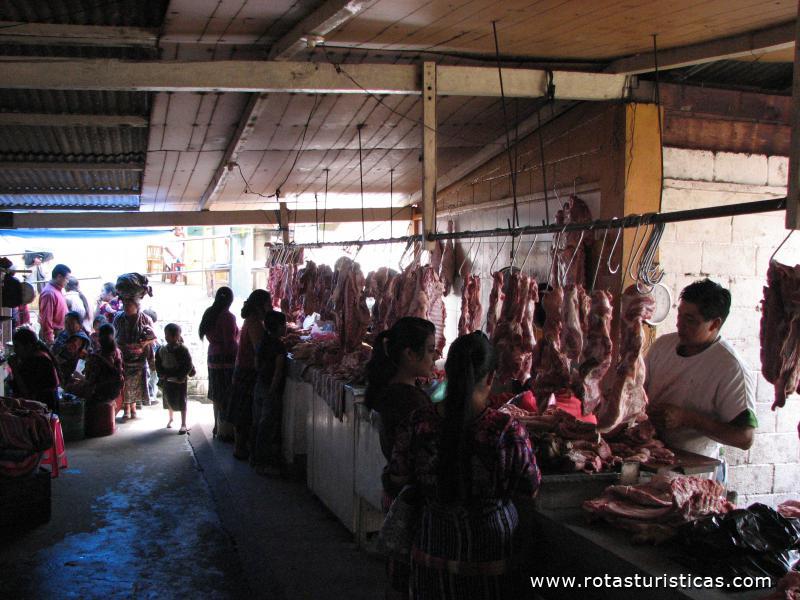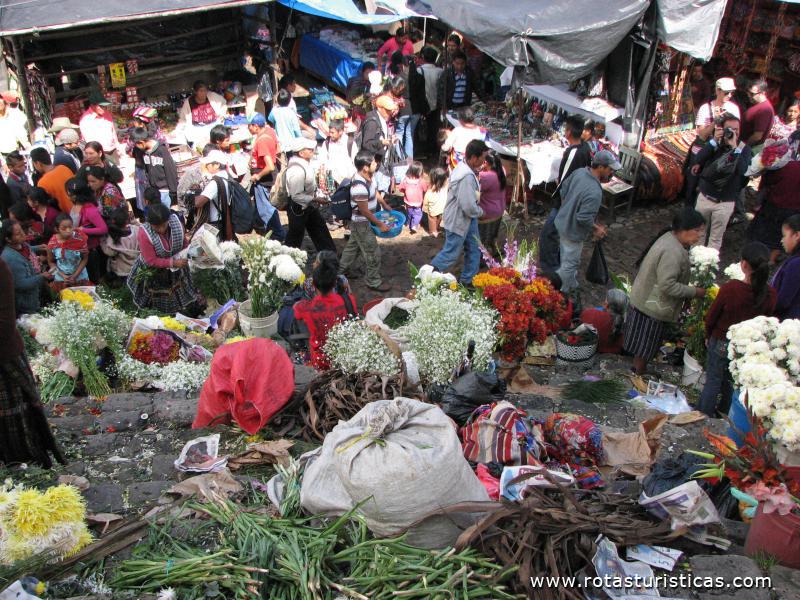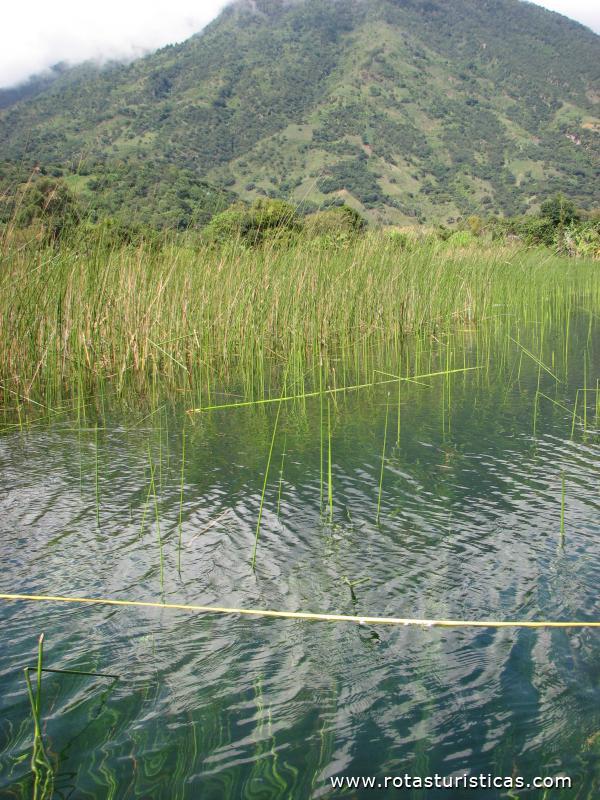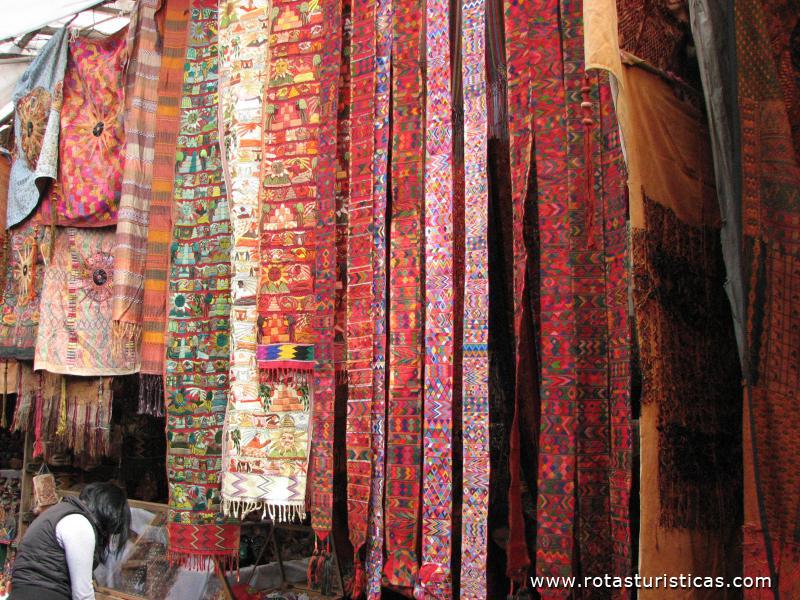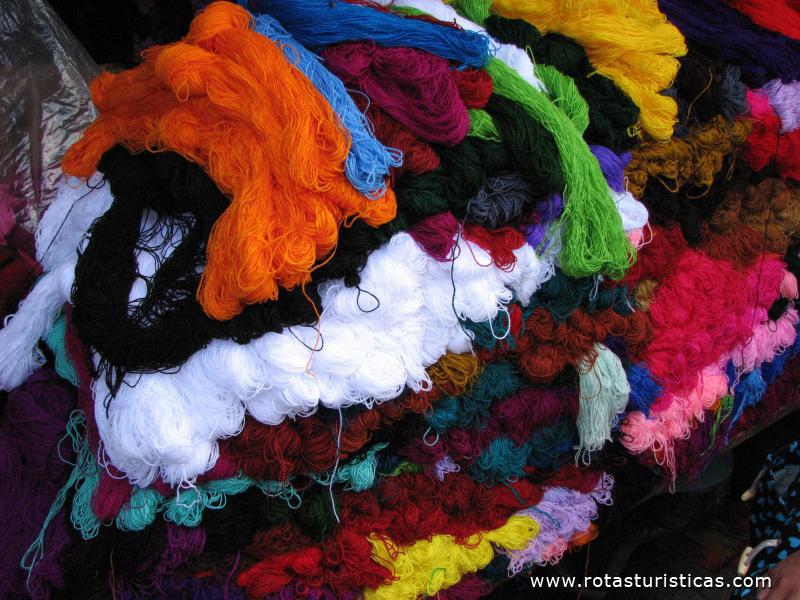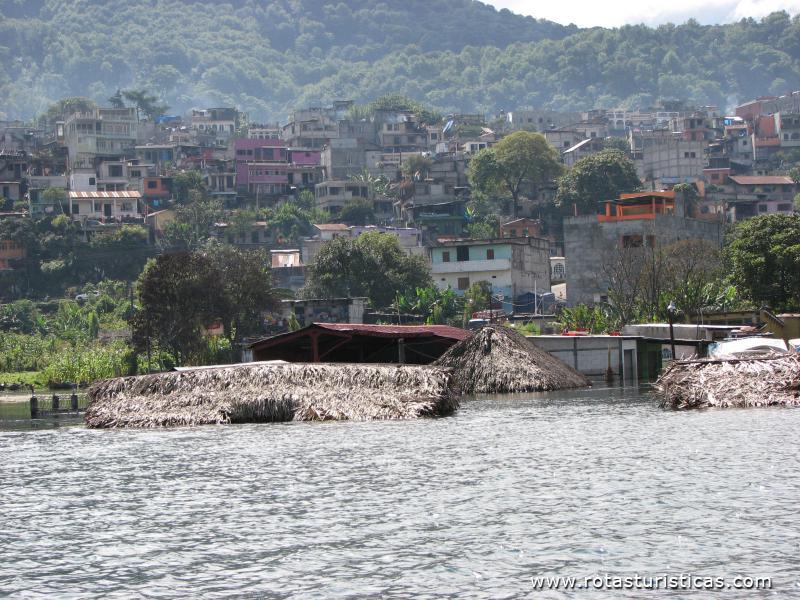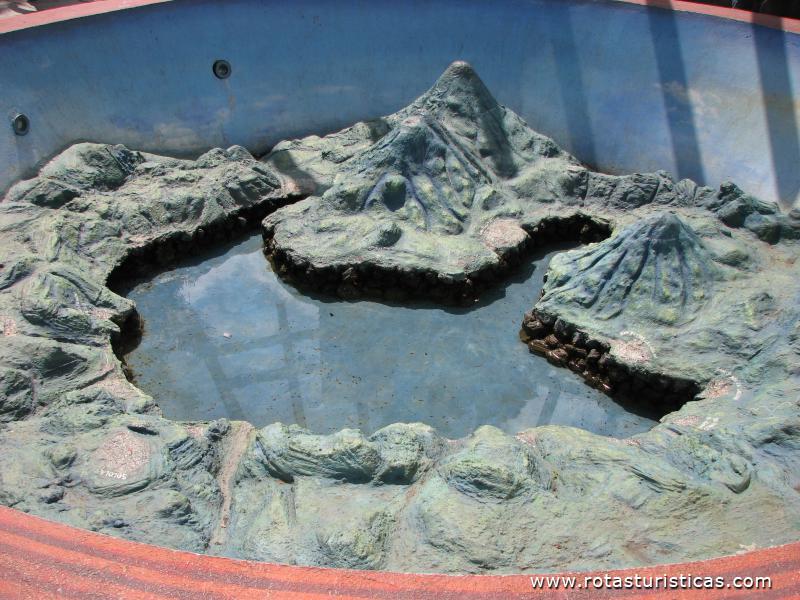Pictures of: Guatemala
Location map
Airports
Hotels and other Accommodation
Golf Courses
What to visit
Consulates & Embassies
World Nomads
The Travel Insurance with the largest coverage

The Travel Insurance with the largest coverage

Guatemala
Guatemala is a Central American country bordering Mexico to the north and west, with the Pacific Ocean to the southwest, Belize to the northeast, the Caribbean and Honduras to the east, and El Salvador to the southeast.
Its capital is Nueva Guatemala de la Asunción, also known as Guatemala City.
The Mayan civilization flourished in Guatemala and the surrounding regions during the first millennium AD.
After nearly three centuries as a Spanish colony, Guatemala gained its independence in 1821. During the second half of the 20th century, it experimented with a variety of military and civilian governments, as well as a 36-year guerrilla war. In 1996, the government signed a peace agreement that formally ended the conflict, which left more than 200,000 dead and had, according to some estimates, created about 1 million refugees.
Its capital is Nueva Guatemala de la Asunción, also known as Guatemala City.
The Mayan civilization flourished in Guatemala and the surrounding regions during the first millennium AD.
After nearly three centuries as a Spanish colony, Guatemala gained its independence in 1821. During the second half of the 20th century, it experimented with a variety of military and civilian governments, as well as a 36-year guerrilla war. In 1996, the government signed a peace agreement that formally ended the conflict, which left more than 200,000 dead and had, according to some estimates, created about 1 million refugees.
Official language
Spanish
Currency
Quetzal
Documentation
As in most Latin American countries, tourist visas are not necessary for visitors from Latin countries and countries belonging to the European Union.
However, all applicants to Guatemala must have a valid passport at the time of admission. Depending on your nationality and destination, an entry visa may also be required.
Bearing in mind that immigration regulations have frequent changes, as well as which countries are exempt from the Tourist Visa, please contact the Embassy or Consular Services of Guatemala in the countries of residence of the visitor.
However, all applicants to Guatemala must have a valid passport at the time of admission. Depending on your nationality and destination, an entry visa may also be required.
Bearing in mind that immigration regulations have frequent changes, as well as which countries are exempt from the Tourist Visa, please contact the Embassy or Consular Services of Guatemala in the countries of residence of the visitor.
Tourism
Guatemala's tourist attractions range from picturesque Mayan ruins and steaming volcanoes, to lush jungles and crowded beaches.
Although it is the largest country in Central America, one can effectively see what the country has to offer in a vacation.
Of all that is best known in Guatemala, the Mayan cities Tikal and El Mirador are among the largest pre-Columbian cities built anywhere in the Americas, and visiting one or both is one of the most memorable things to do. Both incredible and unforgettable destinations are located in the sparsely populated, and northern Petén region of Guatemala a bit wild. While trips to Tikal and El Mirador can be organized from most of the most popular tourist sites around the city, most tours come from the city, ideal for flower tourism.
The volcano Pacaya is one of the most, if not the most, that rises in Guatemala. Rising at an altitude of 8,371 feet, the Pacaya volcano has been continuously active since 1965. Found near Lake Atitlán, one can walk even through the volcano, but for security reasons and for the sake of information, it's a good idea use a guide. One of the biggest thrills to climb the Pacaya, in addition to the panoramic views of the surrounding mountains, is the possibility you have to peer into your cone.
Other attractions are Lake Atitlan, Chichicastenango Market or relax on one of the numerous beaches.
Although it is the largest country in Central America, one can effectively see what the country has to offer in a vacation.
Of all that is best known in Guatemala, the Mayan cities Tikal and El Mirador are among the largest pre-Columbian cities built anywhere in the Americas, and visiting one or both is one of the most memorable things to do. Both incredible and unforgettable destinations are located in the sparsely populated, and northern Petén region of Guatemala a bit wild. While trips to Tikal and El Mirador can be organized from most of the most popular tourist sites around the city, most tours come from the city, ideal for flower tourism.
The volcano Pacaya is one of the most, if not the most, that rises in Guatemala. Rising at an altitude of 8,371 feet, the Pacaya volcano has been continuously active since 1965. Found near Lake Atitlán, one can walk even through the volcano, but for security reasons and for the sake of information, it's a good idea use a guide. One of the biggest thrills to climb the Pacaya, in addition to the panoramic views of the surrounding mountains, is the possibility you have to peer into your cone.
Other attractions are Lake Atitlan, Chichicastenango Market or relax on one of the numerous beaches.
Gastronomy
Guatemala's cuisine is characterized by the fusion of two major cultures, geographical situation and its varied topography, with the sea at both ends, coasts, pastures, forests and mountains, with much sun and water for most of the year which is a source of great variety and availability of ingredients.
Guatemala's cuisine is as rich and varied as its people. Each place has its own dishes and variants, but can be grouped into five major regions of traditional food.
In San Luis Jilotepeque, Jalapa, are famous: Chicken with cream and loroco, chicken broth with chuchu, and the truffles with cream, quesadillas and chiquiadores.
In the city of Esquipulas traditional sweets called Cytoplasty, are enjoyed of all the pilgrims that visit the colonial sanctuary. As a cattle region several meat products, such as greaves, are very popular in Chiquimula and Zacapa.
Still in Escuintla, for example, several seafood products are used in the preparation of seafood broth and assorted fish stews.
La Antigua Guatemala many meals and snacks, sweets of Spanish origin, nuégados, marzipan, coconut candy and milk feathers of Arab descent. Not far from here, in San Martin Jilotepeque is the famous subanique, with mixed base of chicken and pork.
Places like Santa Rosa, where there is an agricultural tradition, the meat is highly valued and own the region and in the climate: loroco, chipilin, Izote flower, flower Mother Cacao, macuy and Pacayas. Their meals are: leg broth, rabbit and roast duck and sausages or morongas.
Guatemala's cuisine is as rich and varied as its people. Each place has its own dishes and variants, but can be grouped into five major regions of traditional food.
In San Luis Jilotepeque, Jalapa, are famous: Chicken with cream and loroco, chicken broth with chuchu, and the truffles with cream, quesadillas and chiquiadores.
In the city of Esquipulas traditional sweets called Cytoplasty, are enjoyed of all the pilgrims that visit the colonial sanctuary. As a cattle region several meat products, such as greaves, are very popular in Chiquimula and Zacapa.
Still in Escuintla, for example, several seafood products are used in the preparation of seafood broth and assorted fish stews.
La Antigua Guatemala many meals and snacks, sweets of Spanish origin, nuégados, marzipan, coconut candy and milk feathers of Arab descent. Not far from here, in San Martin Jilotepeque is the famous subanique, with mixed base of chicken and pork.
Places like Santa Rosa, where there is an agricultural tradition, the meat is highly valued and own the region and in the climate: loroco, chipilin, Izote flower, flower Mother Cacao, macuy and Pacayas. Their meals are: leg broth, rabbit and roast duck and sausages or morongas.
Weather
The climate in the central and western region is generally mild. Evenings in the summer can be cold, especially at higher altitudes.
El Petén and on the Pacific coast the climate is tropical hot and humid.
It is difficult to travel in more remote areas during the rainy season between mid-May and mid-October (mid-November in the north).
The months of March and April are very hot, especially in the lower areas, such as the Pacific coastal plain.
El Petén and on the Pacific coast the climate is tropical hot and humid.
It is difficult to travel in more remote areas during the rainy season between mid-May and mid-October (mid-November in the north).
The months of March and April are very hot, especially in the lower areas, such as the Pacific coastal plain.
Safety
Guatemala has one of the highest rates of violent crime in Latin America. While most serious crimes involve local gangs, incidents are indiscriminate and can generally occur in tourist areas. Despite the high crime rates the majority of visits are trouble free Guatemala and are not affected by crime.
Car-jacking and armed robberies are becoming more commonplace. The crossroads in Fraijanes, San Jose Pinula and Luzes are focal points for Express also kidnappings.
These and sexual assaults can occur anywhere and at any time of the day. Usually involve firearms and motorcyclists.
There are parts of Guatemala City free of crime, which includes Zone 10 (Zona Viva) - popular with tourists and foreign residents. Take care in Zone 1 (historic center) where the hotels are located are cheaper and where the various bus lines terminate.
For shorter trips in towns and cities the safest option is to do in hotel taxis. Upon arrival at the airport, you can buy INGUAT prepaid taxi vouchers at the Tourist Office at the arrivals terminal.
Take care of ATMs, gas stations, airport areas, bus stations and shopping malls.
It is safer to exchange money in hotels, banks or bureaux de change. Do not withdraw much money at once, and avoid withdrawing money at night.
Car-jacking and armed robberies are becoming more commonplace. The crossroads in Fraijanes, San Jose Pinula and Luzes are focal points for Express also kidnappings.
These and sexual assaults can occur anywhere and at any time of the day. Usually involve firearms and motorcyclists.
There are parts of Guatemala City free of crime, which includes Zone 10 (Zona Viva) - popular with tourists and foreign residents. Take care in Zone 1 (historic center) where the hotels are located are cheaper and where the various bus lines terminate.
For shorter trips in towns and cities the safest option is to do in hotel taxis. Upon arrival at the airport, you can buy INGUAT prepaid taxi vouchers at the Tourist Office at the arrivals terminal.
Take care of ATMs, gas stations, airport areas, bus stations and shopping malls.
It is safer to exchange money in hotels, banks or bureaux de change. Do not withdraw much money at once, and avoid withdrawing money at night.
Health
Hospitals in Guatemala are reluctant to give medical treatment unless they can get health insurance. Therefore, it is essential that you have proof of insurance at any time. State-funded hospitals are often poorly equipped and often unhygienic. Check if you have adequate travel health insurance and affordable resources to cover the cost of any medical treatment abroad and repatriation.
Water is generally not safe to drink unless it is filtered, but bottled water is cheap and widely available.
Dengue is common to Latin America and the Caribbean and can occur throughout the year.
The water at Lake Atitlán is not safe to drink, or to swim in certain areas. Check with local authorities before swimming in the lake, and consult a doctor if you become ill during or immediately after a trip in the area.
Water is generally not safe to drink unless it is filtered, but bottled water is cheap and widely available.
Dengue is common to Latin America and the Caribbean and can occur throughout the year.
The water at Lake Atitlán is not safe to drink, or to swim in certain areas. Check with local authorities before swimming in the lake, and consult a doctor if you become ill during or immediately after a trip in the area.
Telecommunications and Electricity
Mobile Phones
The use of mobile devices can be used if roaming is enabled, however, paying attention to very high roaming charges.
Internet
Guatemala is well served by internet services, there are several cybers-cafes with high-speed connections.
In case you have a laptop or notebook, there are numerous cafes that offer the free wi-fi connection.
Electricity
The electricity is 120 Volt 60 Hz and with A / B / G / I decayed plugs.
It is advisable to have an adapter kit for the plugs and electricity converter.
The use of mobile devices can be used if roaming is enabled, however, paying attention to very high roaming charges.
Internet
Guatemala is well served by internet services, there are several cybers-cafes with high-speed connections.
In case you have a laptop or notebook, there are numerous cafes that offer the free wi-fi connection.
Electricity
The electricity is 120 Volt 60 Hz and with A / B / G / I decayed plugs.
It is advisable to have an adapter kit for the plugs and electricity converter.
Other tourist destinations in:
Guatemala
Guatemala
Other world tourist destinations
Why to book with FIND HOTEL ONLINE
The best prices
Our partnerships with the world´s largest operators offer research on the best market prices.
More options
At Rotas Turisticos you can book the hotel, buy the air ticket, book the transfer from the airport to the hotel and vice versa, book the local excursions, rent the car, take travel insurance and consult the places to visit and where to go.
Holiday Tips & Destinations
Hundreds of holiday destinations with all the options that allow you to easily choose the destination that best suits your dream vacation.
FIND HOTEL ONLINE
Links

